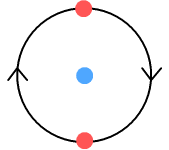describe structure of neuron
Dear Student.
Please find below the solution to the asked query.
Kindly refer the link:
https://www.meritnation.com/ask-answer/question/explain-structure-and-function-of-neuron/tissues/9476033
Hope this information will clear your doubts about the topic.
If you have any more doubts just ask here on the forum and our experts will try to help you out as soon as possible.
Regards.
Please find below the solution to the asked query.
Kindly refer the link:
https://www.meritnation.com/ask-answer/question/explain-structure-and-function-of-neuron/tissues/9476033
Hope this information will clear your doubts about the topic.
If you have any more doubts just ask here on the forum and our experts will try to help you out as soon as possible.
Regards.



